Turmeric, Cucurma longa, is a tropical rhizome you can grow in both subtropical and cool subtropical areas like Sydney. You can even grow it in a pot in cooler climates, as long as it’s protected from frost and extreme cold. In cooking it is used for colour and flavour.
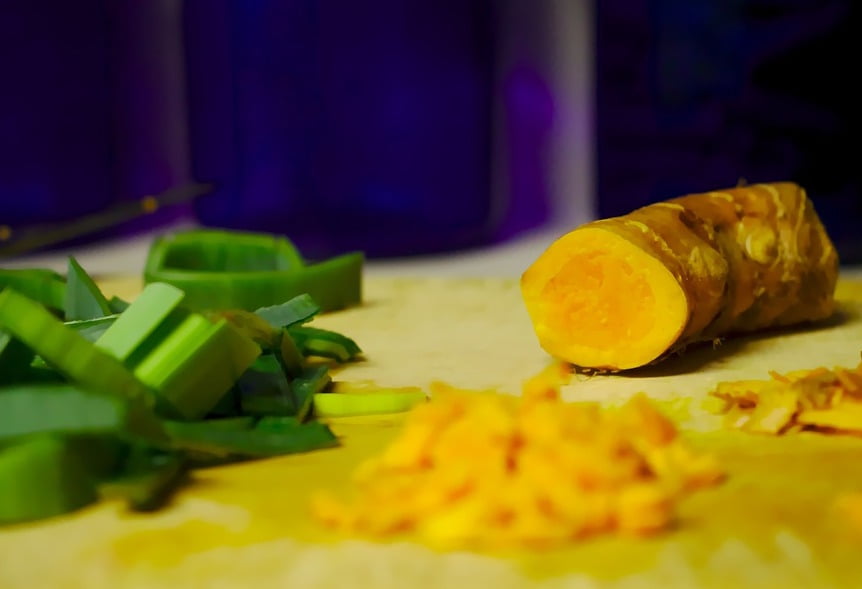
Ground fresh turmeric
Turmeric is a good-looking lush foliage plant in a frost-free garden with its one-metre (3 foot) long sheathed leaves. The beautiful pure white flowers are up to 20cm ( 8 inches) long and are also suitable for picking.
It grows and looks very similar to ginger (and is in the same family – Zingiberaceae) and it’s often hard to tell them apart but you can see the difference when you look more closely at the rhizomes.
Turmeric’s origins are a bit obscure but it most likely came from South-East Asia. In India, there are 30 different recognised varieties of turmeric, including Erode, Salem, Duggirala, Amalapuram, Rajapuri, Madras, Krishna, Kodur, Haldi, Thodopuza and Alleppey. Different varieties are grown based on taste preferences, end use, soil type and crop maturation time.
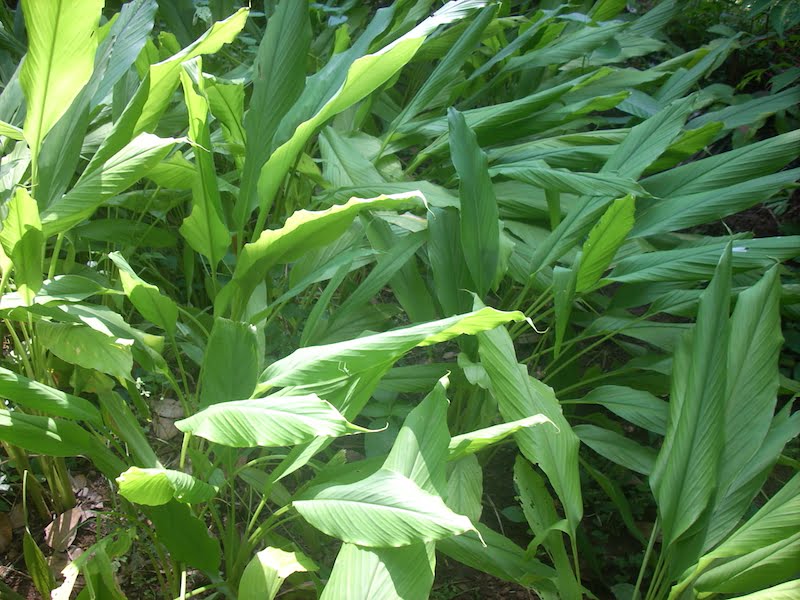
The turmeric plant, Curcuma longa, has leaves that look very similar to ginger.
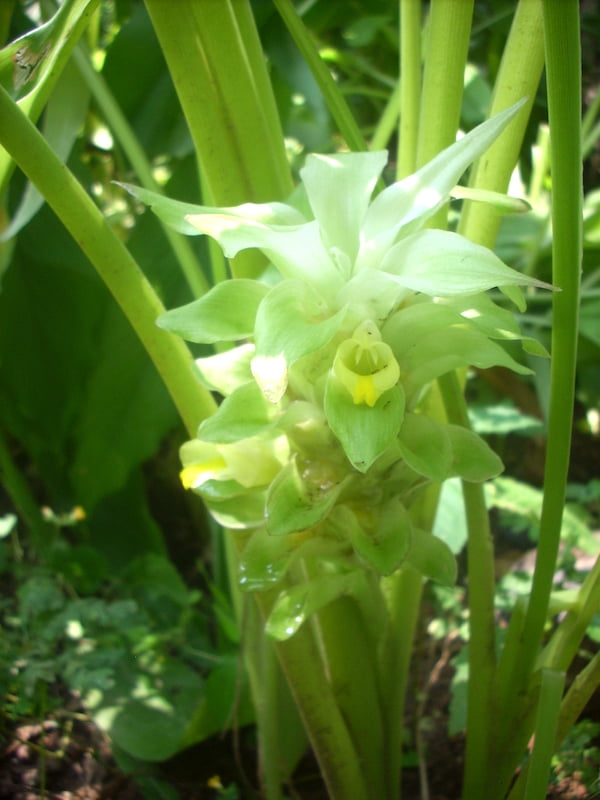
Turmeric flowers are suitable for picking.
Growing turmeric
You can often buy fresh turmeric rhizomes at Asian grocery markets. Look for ones that have obvious buds.
Plant the rhizomes horizontally about 5-7cm (2-3 inches) deep and 40cm (15 inches) apart. The best time is between autumn and spring when the rhizomes are dormant. If the rhizome has lots of buds, you can cut it into smaller pieces to make more plants.
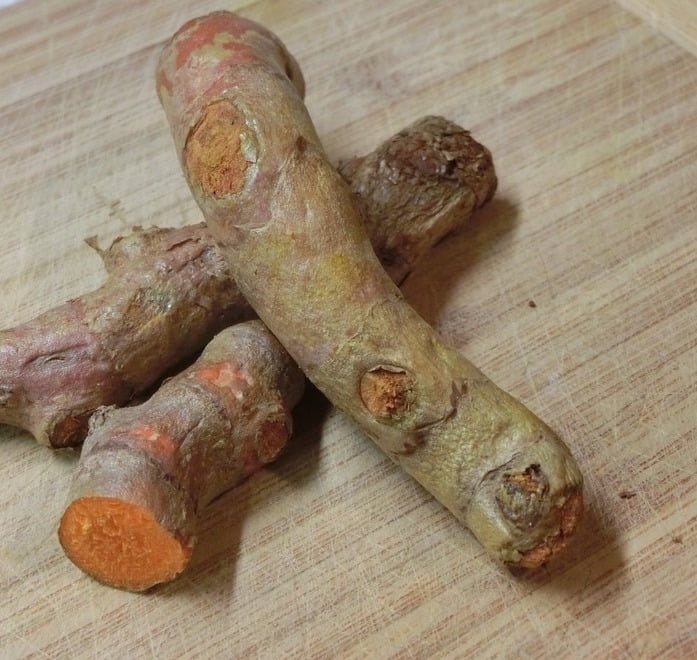
Turmeric rhizomes
Although it favours well-drained soil, turmeric will grow in heavier clays but it needs plenty of moisture – about 1200mm (45 inches) of rain annually. Plant it in full sun in high moisture conditions, or a wind-protected spot in dappled or half shade in drier zones where you should also try to wet it down regularly to keep it as moist and humid as possible.
Plants are mature enough to harvest after 8 months – wait until the leaves yellow off and begin to die down and then lift the rhizomes. If you don’t want to lift all the rhizomes, just cut down the dying leaves and wait for it to reshoot as the weather warms up again.
If you’re in a cool climate and you’re growing turmeric inside, plant the rhizomes in a large pot in the late winter and keep it near a sunny window until the summer arrives and you can put it outside for a few months before its ready for harvest – but make sure you harvest it before the first frosts arrive and kill it off.
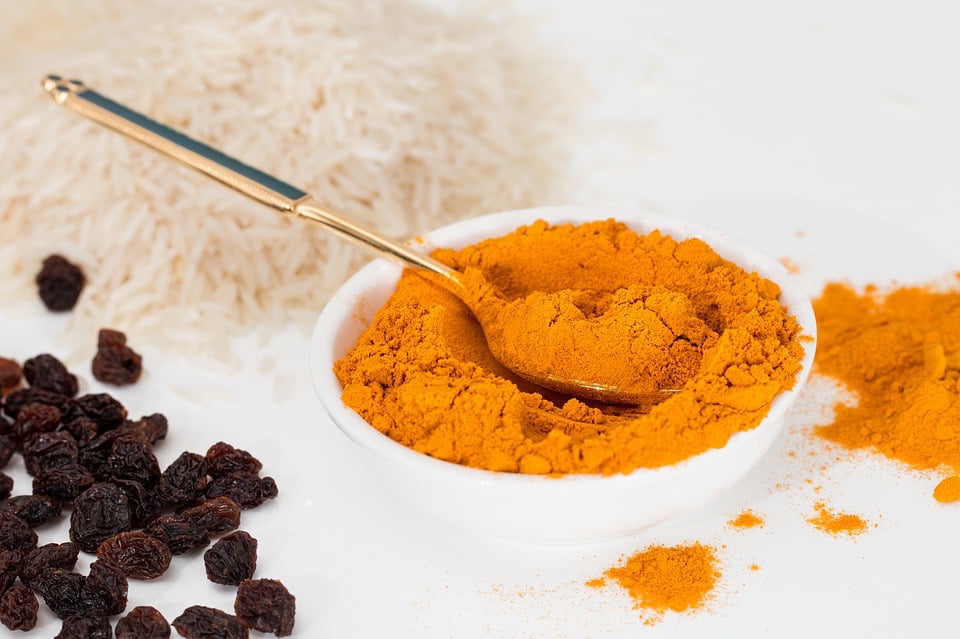
Rich dark yellow-orange turmeric powder
Using and cooking turmeric
It’s a member of the ginger family like galangal and it’s used for both colour and flavour. You can use it in cooking and also as a dye – it’s sometimes been referred to as ‘Indian saffron’, although it is difficult to make it colour-fast in fabrics. This seems surprising when it seems to stain fingers, clothes and everything in the kitchen so easily when you’re cooking!
The rhizome is the part that we use. It’s harvested by lifting – at this stage you may want to reserve a few rhizomes for replanting for the next season. Wrap the rhizomes and put them in the crisper drawer in your fridge until you’re ready to use them.
You can grind the turmeric rhizomes when they’re fresh. If they’ve been left for a while and have become hard, then boil them for about 30 minutes. This partly denatures them so they won’t sprout, and also evens out the colour through the rhizome. The boiling also gelatinises the starches so they can be ground, as they are otherwise too hard – like a very dense wood. Leave the boiled rhizomes to dry thoroughly and then they’re ready for grating or milling.
Spice companies put the rhizome through a hammer mill and then a much finer mill to grind it up into a fine, yellow powder for packaging.
Turmeric is a basic ingredient in many Indian foods, adding its earthy bitterness and rich yellow colouring to dishes such as curries, and biryani and pulao rice. It’s also widely used in making pickles from vegetables and fruits such as cucumbers and onion, which would normally turn brown in the jar. The turmeric gives the pickles an appealing yellowish colouring.
Turmeric, which contains curcumin, has traditionally been used in Indian medicine to treat digestive problems and also colds, as well as as an antiseptic to clean wounds and a face mask for skin rejuvenation (but don’t leave it on for more than 10 minutes if you don’t want to look like you’ve developed jaundice!). In more recent years it has been investigated as a superfood that’s supposedly an anti-inflammatory, a fat metaboliser and even a possible treatment for Alzheimers Disease. However a review of more than 120 clinical trials have showed no obvious medicinal benefits. (Nature “Deceptive curcumin offers cautionary tale for chemists“).
However many people believe it very useful for reliving a sore throat, using one cup of warm milk plus a teaspoon of turmeric and adding honey to taste. Turmeric also goes surprisingly well with orange juice (try half a teaspoon in a glass of OJ).
Use turmeric leaves as a wrap for steaming fish, or eat them like lettuce.
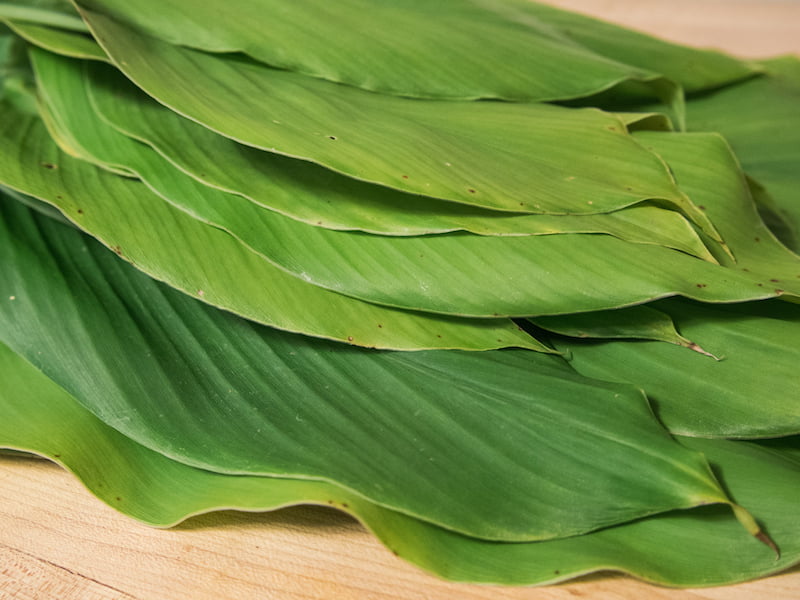
Turmeric leaf can be used in the kitchen to wrap fish before steaming. Photo by daun kunyit via Flickr

Turmeric tea. Photo by Teresa Trimm via Flickr
Types of turmeric
Madras turmeric is pale mustard-yellow and has a 1.5-2% curcumin and a slightly bitter, earthy scent. We use this turmeric mostly for colouring, eg. in pickles, mustard and chicken soup. The turmeric sold in supermarkets throughout Australia, UK and Europe is mostly Madras turmeric and also the favoured type for most curry powders.
Alleppey finger turmeric is a much darker yellow to orange colour and also has a deeper, more earthy scent. With its higher 5-6% curcumin content it’s used more in flavouring and also for medicinal purposes. It’s easier to grind than Madras and is also the more popular variety in the US.
Alleppey turmeric really comes in to its own when it’s combined with other spices like cumin, cloves, coriander and paprika. It’s essential for Moroccan and Indian cooking, eg. in making dahl.
